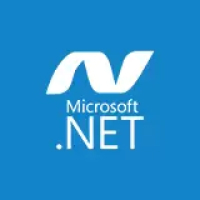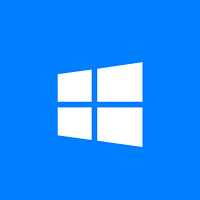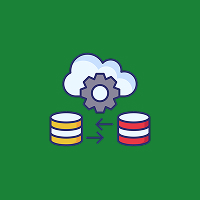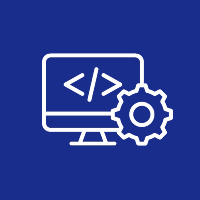In a world where people use apps on their phones more than anything else, companies have to deliver seamless experiences on native apps built on iOS and Android. Developing and maintaining apps using two native codebases can be time-consuming, expensive, and complicated especially if you are a startup or a company trying to grow. Fortunately, you have React Native.
React Native is an amazing open-source framework built and maintained by Meta (formally Facebook) that allows developers to write code once in JavaScript and run it on both mobile operating systems. By achieving high performance like applications built with native code while utilizing the speed of web technologies, React Native enables companies to build rich performant applications in a faster, and more economical way.
1. Write Once, Run Anywhere: Code Reusability
The key feature of React Native has to be code reusability. Developers are not writing two codebases and iOS native app is being written one in Swift/Objective-C and the other in Java/Kotlin for Android. By using React Native, developers can just write one codebase in JavaScript and React. In doing this, we have:
- Reduction in development cycles
- Easier debugging
- Easier testing
- Easier rollouts of features across platforms
Real-world examples: Companies like Uber Eats have been able to use React Native to significantly reduce the time between feature development while maintaining the same user experience across all devices.
2. Near-Native Quality
Typically, older hybrid frameworks utilize WebViews – meaning the apps are executing inside a browser-like environment. React Native takes a different approach by utilizing native UI components, and the end result relies on native APIs for rendering. This means:
- Smooth animations and transitions
- Fast load times and responsiveness
- UI behavior that is consistent with a fully native option
React Native offers flexibility without compromising performance so that apps can deliver a better experience.
3. Hot Reloading: Elevating Developer Experiences
One of the best features in React Native is hot reloading, which allows developers to see the changes they’ve made in real-time without restarting the app, and recompiling the whole project. This timeframe is greatly reduced with hot reloading for:
- Change iterations for design
- Debugging and testing
- Collaboration between developers and designers
It is amazing how this can speed up the development cycle and allow for a greater quality of apps to be created in less time.
4. Healthy Community with Active Ecosystem
React Native already benefits from a well-built and dynamic community of developers around the world – this means:
- Open source libraries and information thousands strong to extend and enhance some of the built-in functionality.
- Proactive work to update and enhance React Native from Meta and the community which keeps you on the cutting edge of development.
- Countless tutorials, shared experiences, forums and third-party tools can help a faster onboarding experience.
- Famous libraries such as React Navigation and Redux exist to enhance navigation state management, etc.
5. Easier Updates and Maintenance
It is easy for user experiences to be inconsistent or delayed when working on two apps. With a single codebase in React Native, you can:
- Launch an update or fix a bug on iOS and Android simultaneously.
- Use services like Microsoft CodePush to push over-the-air (OTA) updates as needed, without resubmitting your app to app stores, meaning minor changes can be delivered to the user instantly.
- Save development teams time and maintenance, by having to maintain one version of your app instead of two.
With a single codebase to work from, you’ll now be able to roll out features faster and provide a more consistent experience for your users and customers.
6. Lower Cost: Time and Resources
With fewer developers and less duplication of work React Native radically reduces your development expenses. For startups and SMBs, it’s a better deal since it means:
- Lower initial investment for MVP.
- Going to market and testing your ideas faster.
- Lower ongoing costs for updates and support.
This allows businesses to invest their resources in significant projects, such as marketing, customer support, or innovations.
7. Successful Products From Major Brands
Across the industry, major brands have adopted React Native, validating the framework and providing gains from compromises in development process. Major companies include:
- Facebook and Instagram – integrating React Native in some sections of their apps.
- Walmart – providing a single mobile experience with more successful outcomes.
- Discord – providing a highly interactive, multi-platform chat experience.
With a wide range of success stories, React Native is scalable and durable enough for apps with millions.
8. Flexibility with Native Modules
If your application requires some native functionality that is platform-specific like Camera features, augmented reality, and even hardware-intensive computing scenarios, React Native allows easy access to the native module system. You can:
- Write your native code for iOS (Swift/Objective-C), and Android (Java/Kotlin) where required.
- Take advantage of JavaScript dynamic capabilities along with native SDKs.
- Still have no compromise if you need to utilize advanced functionality or speed.
This hybrid model presents all the perks of both worlds to developers and ensures a seamless path for future development of newer apps.
9. Future-Proof with React Native and More
Lastly, React Native continues to approve and become stronger with more innovations like:
- Fabric Renderer, an improved rendering engine or architecture allowing for better performance and interoperability with the latest architecture
- TurboModules, which allows for faster initialisation of native Modules
- Integration of other new technologies like React Native Web which runs React Native with reusable code beyond mobile to make web apps.
With so many advancements, it is clear that React Native will be a progressive option for building mobile applications for many years to come.
Conclusion:
In a world that is in a constant state of upheaval caused by rapid innovation, React Native is reimagining how mobile apps are built and delivered, and it is a viable, robust, efficient, and scalable solution for organizations of any size. React Native is tactfully structured to give its users the best of both worlds: the performance of a native application along with the speed, flexibility, and capability of JavaScript, while decreasing time-to-market, costs and creating a consistent brand experience across devices and environments.
Contact Us Today













 Database Development
Database Development












































